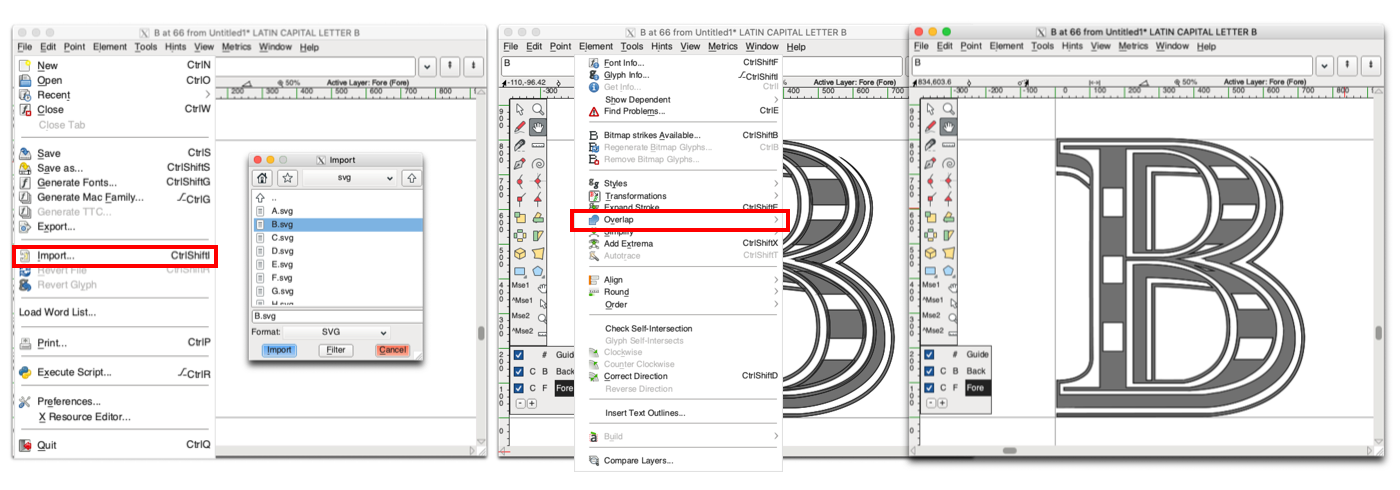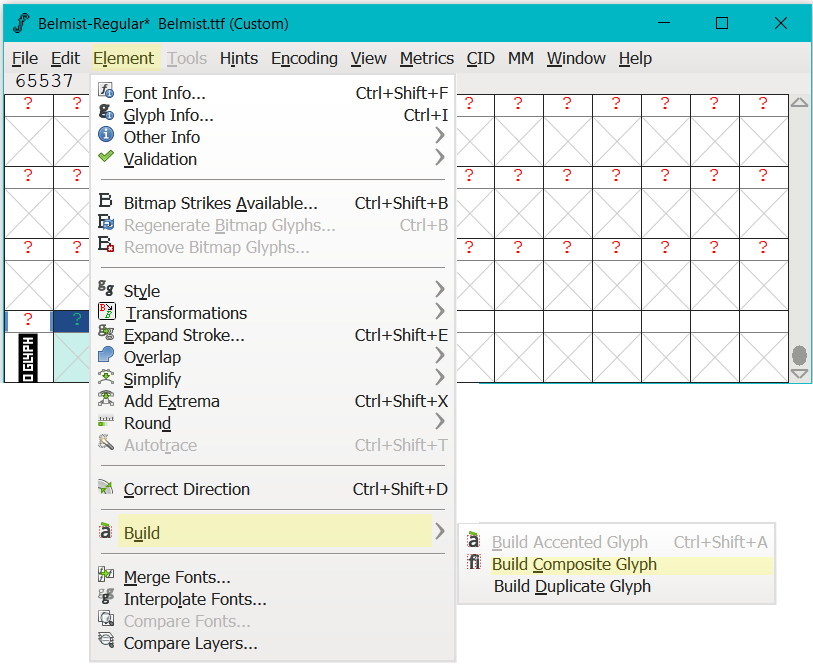

- FONTFORGE LINK GLYPH TO ANOTHER HOW TO
- FONTFORGE LINK GLYPH TO ANOTHER INSTALL
- FONTFORGE LINK GLYPH TO ANOTHER FREE
Han characters can have different glyph shapes, depending on the region they are used in.Untar the text file in your working directory: tar xvfz _.If you want to have better data, use the CHISE project and the Unihan.txt file provided by Unicode. One very handy text file, which lists all unique Han characters in Unicode 5.0, their radicals, radical index and remaining strokes and components they are built of in IDS (Ideographic Description Sequence) format: ids_rs.tar.gz (tarball) or ids_rs.zip (zipfile) Caveat: This ids_rs.txt file is not final, nor is it official or error free.
FONTFORGE LINK GLYPH TO ANOTHER INSTALL
(On Debian / Ubuntu: apt-get install agrep) It allows you to grep a text file with an AND search. With other distributions the font packages might have different names.) You will find the ttf files in /usr/share/fonts/truetype/arphic/. (On Debian / Ubuntu use apt-get install ttf-arphic-bsmi00lp ttf-arphic-gbsn00lp (for the Ming/Song style fonts) and apt-get install ttf-arphic-bkai00mp ttf-arphic-gkai00mp (for the Kai style fonts).
FONTFORGE LINK GLYPH TO ANOTHER FREE
As the UMing and Ukai fonts are based on the original free Arphic fonts, it's a good idea to have them on the system, too.Never modify the original sfd files in place! Use the templates instead: and.Untar them into your working directory: tar xvfj umingukai_2_.Get the development tarball of the fonts (they are already in fontforge's native sfd format): (55MB).The following screenshots show my recommended Fontforge preferences: Screenshot 01 Screenshot 02 Screenshot 03 Screenshot 04 Screenshot 05 Screenshot 06

As the fonts we work on are fairly large in size and therefor use a lot of memory when opened in Fontforge, I recommend to have at least 1GB of RAM. Get a recent copy of it (from or later) and install it on your development machine.
FONTFORGE LINK GLYPH TO ANOTHER HOW TO
It seems I need to somehow change the bounding box dimensions, but I'm not finding a way to do that.This is a short tutorial about how to contribute to the fonts. In other words, I want to make the vertical space larger, but keep the horizontal space for each glyph the same. How do I prevent them from scaling down when I do this in FontForge? How do I simply adjust the descent so my glyphs aren't cut off in the SVGs? I am using that Google Font, so I have no control really over the font itself, but changing this one property seems like it will give me the SVGs I need (I am going to do animations on the SVG paths, FWIW).

The glyph we were looking at is now well inside the bounding box, but everything was scaled down! I don't want that, I want the width to stay the same (so the glyphs' sides touch the left and right), but now they are much smaller on the left and right. I also uncheck "Scale Outlines", I don't know what that does but I don't want to adjust anything, I don't want any scaling of the glyphs, I just want the glyph to not be cut off at the bottom. So I change it in Element > Font Info > General, setting descent to 650, much larger than before, to account for some glyphs that stretch way down below the fold.

So I think "let me extend the descent so it goes below the furthest path in any of the glyphs, and that way my SVGs will not have any missing pieces!" Well, when I export the SVG, it also cuts it off (the viewBox is not large enough to contain the path). The descent is at 150, but as you can see the glyph extends below 150. Some of the glyphs are cut off, as you can see on that glyph toward the top right, but most are pretty close to the edges (as we would hope): When I open the font and scroll into view some of the glyphs (in FontForge), it looks like this: Following this, I run this command to generate the SVGs: fontforge -lang=ff -c 'Open($1) SelectWorthOutputting() foreach Export("svg") endloop ' font.ttf


 0 kommentar(er)
0 kommentar(er)
